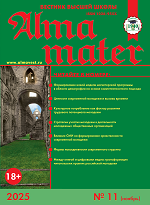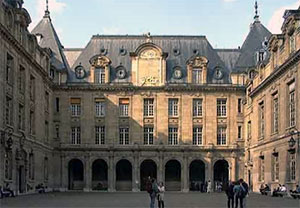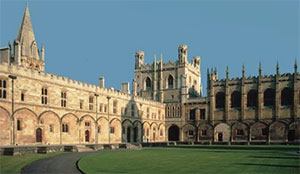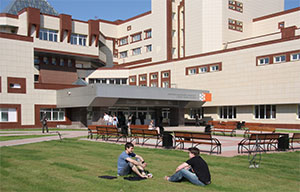UDC 35-9
https://doi.org/10.20339/AM.11-20.060
A.M. Khatukhov is Cand.Sci. (Biology), Ass. Prof. at Kabardino-Balkarian State University n.a. H.M. Berbekov e-mail: bsk@kbsu.ru ; and F.Zh. Berova is Dr.Sci. (Economics), Leading Researcher at Institute of Informatics and Problems of Regional Management of Kabardino-Balkarian Scientific Center of RAS e-mail: berova@list.ru
Discussed is the problem of complex (historical-demographical, ecological-geographical and economical) administrative-territorial division (ATD) of one of national republics of the North Caucasus, i.e. Kabardino-Balkaria Republic (KBR), based on a comprehensive approach. Data on population censuses of different years, scientific works on discussed topic and the authors own materials on geo-ecology and demography of KBR were used. The archaic character of ATD of the region according to ethnopolitical principle is shown, and it is argued, that such a division of the republic’s territory is a legacy of Russia's colonial policy in the North Caucasus in the 19th century, and the command and administrative system of the Soviet period in the 20th century. Based on historical information, sources of dismemberment of the predecessor of the KBR, i.e. Kabarda (the name up to 1922) on ethno-political principle as one of the tools for solving the militarystrategic task of weakening and “appeasing” are highlighted. Rejection and occupation by Russian colonists of the plain part of Kabarda and redistribution by colonial administration of remaining territory between two indigenous ethnic groups (Kabardins and Balkars) with infringement of one side and encouragement of other created a “three-story” contradictory structure: one on the plain, others on the foothills, others on the foothills in the mountains. Such a division was finally established as a result of administrative-territorial reform of the 1920s and continues to form the formal basis of ATD of KBR. This fact, as well as consolidation of artificial division of Kabarda in the double name of the republic (Kabardino-Balkaria) periodically becomes occasion for demonstration of ostentatious separatist sentiments. Results of this study indicate, that by the end of the 20th century, due to redistribution of population and integration processes, the ethnic map of KBR came into conflict with the ATD on ethno-political basis. With this in mind, a new version of ATD of KBR, based on basin principle is proposed and justified, removing interethnic contradictions, generated by previous division and guaranteeing sustainable development of the republic. Relevance of the study is in the imperfection of ATD of the Kabardino-Balkarian Republic, as the cause of interethnic contradictions has not yet become the subject of a special study. Thus, adoption of the basin principle as the basis of the ATD with establishment of 5th districts instead of the current 10th would remove problems, created by ethno-political division and contribute to sustainable development
and preservation of unique nature of one of mountain resorts of the country.
Key words: North Caucasus, Kabardino-Balkaria Republic, population, ethno-political fragmentation, administrative-territorial division, basin principle, sustainable development.
References
1. State police of exclusion of Russia from demographic crisis. Moscow, 2007.
2. Karov, A.Kh. From history of land relations and land organization of Kabardines and Balkarians in the first half of 18th into last quarter of 19th centuries. Nalchik, 2014. P. 8–23.
3. Zumalulov, F.M., Kuchumov, M.M. National policy of Russia: content and results. Nalchic, 2006. P. 3–6.
4. Kushkhabiev, A.V., Ulakov, M.Z., Alkhasov, M.M., Tabaksoev, I.A. Transformation of value systems of population of Kabardino-Balkaria under modern conditions.
5. Kazharov, A.G. Kabarda and Balkaria in the process of administrative territorial reformation of the North Caucasus (1918 and first half of 1922 years). Nalchik, 2001.
6. Zelenskaya, A.E. Evolution of settling in the Kabardine-Balkar Republic. Stavropol, 2010.
7. Territory and settling of kabardins and balkars in 18th and beginning of 20th centuries (collection of documents). Nalchik, 1992.
8. Dzamikhov, K.F., Dumanov, Kh.M., Kazharov, A.G. Ethno-territorial and administrative-territorial structure of Kabardine-Balkaria in 18–20th centuries. Nalchik, 2010. P. 348–375.
9. Kagieva, T.A. Evolution of land relations in Kabarda in second half of 18th and beginning of 20th centuries. Nalchik, 2011.
10. Karmov, A.Kh. Exit of Balkaria from Mount ASSR and creation of Kabardine-Balkaria autonomous region. Nalchik, 2008. P. 59–76.
11. Tkhamokova, I.Kh. Russian population in Kabardine-Balkaria in 19th and beginning of 21st centuries: dynamic of ethno-cultural borders. Nalchik, 2014.
12. Kushkhov, Kh.S. On the problem of ethnic identity of Circassians. Izvestia of Kabardine-Balkarian scientific center of RAS. 2012. No. 6 (50). P. 120–125.
13. Gunya, A.N. Dynamic of assimilation of mount region: structure and institutional factors (example of dynamic of settling and land using in Kabardine-Balkaria and Karachaevo-Cherkassia). Nalchik, 2008.
14. Buraev, R.A. Social economical geography of Kabardine-Balkaria. Nalchik, 2005.
15. Berova, F.Zh., Sabanchiev, A.Kh. Regional features of processes of urbanization and dis-urbanization. Space of economy. 2010. No. 1. P. 210–215.
16. Kudashev, V.N. Historical information about Kabardine people. Nalchik, 1991.
17. Zonn, S.V., Gerasimov, I.P. Brief soil-geographic survey of Kabardine ASSR. In: Natural resources of Kabardine ASSR. Moscow-Leningrad, 1946. P. 325–362.
18. Khatukhov, A.M., Berova, F.Zh. Features of settling of population and formation of modern ethnic map of KBR. Izvestia of Kabardine-Balkar scientific center of RAS. 2018. No. 6 (86). P. 189–194.
19. Khatukhov A.M. and Berova F.J. Trends in population settlement and the emergence of a modern ethnic map in the Kabardino-Balkaria due to its administrative and territorial structure. International Journal of Advanced Multidisciplinary Research and Review. 2019. Vol. 6. Iss. 4.
20. Buraev, K.Kh. Geography of Kabardine-Balkar: what, where, when? Nalchik, 1997.
21. Byasov, K.Kh. Perfection of organizational mechanism of management of innovative process for stable development of mount territories. Vladikavkaz, 2007. P. 28–30.
22. Dzagoeva, D.M. Problems of social-economic development of mount territories. In: Innovative technologies for stable development of mount territories. Vladikavkaz, 2007. P. 63–64.
23. Badov, A.D., Makoev, Kh.Kh. Principal problems of mount settling of South Osetia on modern stage. In: Innovative technologies for stable development of mount territories. Vladikavkaz, 2007. P. 24–25.
24. Cohen, J.E. and Small, Ch. Hypsographic demography: The distribution of human population by altitude. URL: https://www.research gate. net/publication/13459376_Hypsographic_demography_The_distribution_of_human_population_by_altitude.
25. Tatarkin, A.I., Lvov, D.S., Kuklin, A.A., Myzin, A.L. and oths. Modeling of stable development as condition of raising economic safety of territory. Ekaterinburg, 1999.
26. Factors, that Affected Population distribution. URL: http://www.yourarticlelibrary.com/population-geography/factors-that-affe...
27. Berova, F.Zh., Berov, A.Z., Dumanova, A.Kh. and oths. Processes of urbanization and its features in North Caucasus to the end of 20th century. In: Automation of management and intellectual systems and environments. Krasnaya polyana, 2011. P. 42–47.
28. Zalikhanov, M.Ch. Tours in Kabardine-Balkar. Nalchik, 1967.
29. Krupnov, I.N. Ancient history and culture of Kabarda. Moscow, 1957.
30. Ivanov, P.M. Stable development: conception, model of management, strategy. Nalchik, 2016.
31. Khatukov, A.M. adequate administrative territorial division of Kabardine-Balkar Republic as one of ways for achieving compromise between economy and ecology on regional level. Vestnik KBGU. 2009. Iss. 10. P. 63–64.
32. Khatukov, A.M. Object, territories of conflict nature use in Kabardine-Balkar Republic. Strategy for development of Kabardine-Balkar Republic up to the year of 2030. Nalchik, 2011. P. 255–269.
33. Khatukov, A.M. Ecological aspect of perspective economic development of Kabardine-Balkar in the light of new paradigm of stable development. In: Problems of rational nature use and preserving of nature environment in Kabardine-Balkar Republic. Nalchik, 2012. P. 37–38.
34. Naloeva, E.D. Kabarda in the first half of 18th century: genesis of adygh feudal society and problems of social-political history. Nalchik, 2015.
35. White, G.F. A Perspective of River Basin Devolopment. URL: https://scholarship.law.duke.edu/cgi/viewcontent.cgi?article=2711&context=lcp
36. Molle F. River-basin planning and management: The social life of a concept. URL: https://www.academia.edu/879075/River-basin_planning_and_management_The_...
37. River Basin Planning. URL: www.water encyclopedia.com/Re-St/River-Basin-Planning.html
38. Barrow, Ch.J. River basin development planning and management: Critical review. URL: https://www.researchgate.net/publication/222474737_River_Basin_Planning_and_Development_A_Critical_Review_World_Development.
39. Bandaragoda D.J. Institutional analysis for water resources management in a river basin context. URL:http://s3-us-west-2.amazonaws.com/ucldc-nuxeo-ref-media/1879445d-f360-4d26-835a-0a29a88900c8
40. Koritny, L.M. River basin conception in nature use. Irkutsk, 2001.
41. Zhdanov, Yu.A., Gorstko, A.B. Economic-biological systems. In: Science and mankind (international yearbook). Moscow, 1980. P. 305–317.
42. Nemykin, A.Ya. Landscale basin approach to territorial land-tenure regulation in Voronezh region. Voronezh, 2005.
43. Lebedeva, E.B. Influence of political regime on transformation of administrative territorial division in Russia. Moscow, 2012.











.png)






